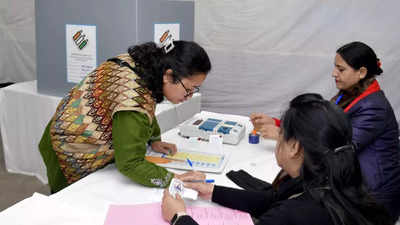NEW DELHI: The share of young electors aged 18-29 years in Kerala, at just over 18% of its total electorate in 2024 Lok Sabha polls, was the lowest among all states/UTs. However, the southern state also had the highest share of electors in 60-79 years age bracket, at 20.5%.
These statistics are part of ‘Atlas on general elections to Lok Sabha 2024’ unveiled by EC Wednesday.
For comparison, electors in the 18-29 age group comprised 22.8% of the national electorate as on May 20, 2024, while the all-India share of those in the age bracket of 60-79 years was 14.7%.
Among the bigger states, Assam had the highest percentage of electors in the 18-29 years bracket, at nearly 30%, followed by Jharkhand with 28.4%, on May 20, 2024. Delhi electorate had the highest share of voters aged between 30 and 59 years, at nearly 66%, which is way higher than the national average of 60.6%.
As per the atlas – released by chief election commissioner Rajiv Kumar, flanked by election commissioners Gyanesh Kumar and Sukhbir Singh Sandhu – 310 or 57% of the 542 Lok Sabha constituencies that went to polls last year (not counting Surat where BJP candidate was elected unopposed) had a winning margin of more than one lakh votes, while only 39 had a margin of less than 20,000 votes.
Only two parliamentary constituencies, Mumbai North West in Maharashtra and Attingal in Kerala, had the winning margin of less than 1,000 votes, while the winner across 18 constituencies was ahead of the runner-up by over five lakh votes. In Tamil Nadu, the margin was more than one lakh across 33 of total 39 seats. CEC Kumar, while releasing the atlas, said the system of poll data is robust with in-buit “red flags” which ensure that “nothing can go wrong”.
Though the voteshare of NOTA option fell to 0.99% from 1.06% in 2019 and 1.08% in 2014, the percentage of NOTA votes in Bihar, at over 2% was more than double the national average, while Nagaland polled the least NOTA votes at 0.2%. The voter turnout among third gender voters – despite their enrollment having increased to 48,272 from 39,075 in 2019 LS poll – remained low at 27.1%.


